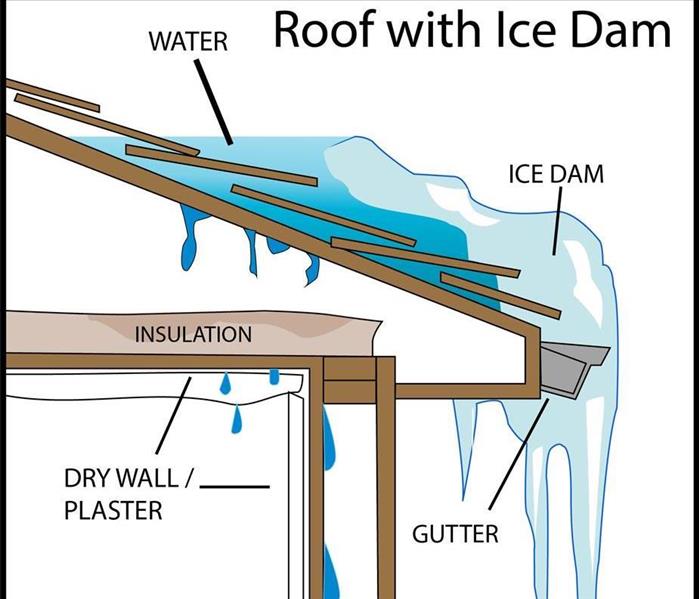Ice Dams And Their Effect On Your Home
1/19/2019 (Permalink)
What are ice dams?
Ice dams are mounds of ice that form on the edge of the roof of your property during the winter. They form when the roof gets warm enough to melt the snow that lies on top of it. This melt then travels down the roof under the layer of snow to your gutters and refreezes when it reaches the eave of the roof. This frozen water builds up gradually causing an ice dam to form. The flatter the roof, the easier it is for an ice dam to settle in.
What kind of damage can they do?
As an ice dam grows, at a certain point the melt that flows down to it doesn’t freeze because it reaches a place on your roof that stays above freezing. When the liquid doesn’t freeze, it finds cracks and crevices in your roof to leak into and makes its way down into your property. From there, the water can leak into walls, through ceiling insulation, and down into units causing significant water damage.
Winter is coming and that means winter is quickly approaching. Snow, ice, freezing rain and falling temperatures, all have the potential to impact the condition of your property. While water damage can occur at any time of year, one of the main causes of water damage during the winter months are two words that give all property owner the chills – ice dams.
If you were one of the many people from Rhode Island to Maine who experienced damaging ice damns during the record-breaking snowfall of 2015 you already know the problems they can cause! That year Boston and the surrounding areas were buried under more than 110 inches of snow – most of which occurred during a short six-week period. As the snow fell again and again, it piled high on rooftops throughout New England and led to costly ice damns.
As anyone affected can tell you, prevention is your best bet when it comes to ice dams so let’s review how to avoid water damage from them this winter.






 24/7 Emergency Service
24/7 Emergency Service
